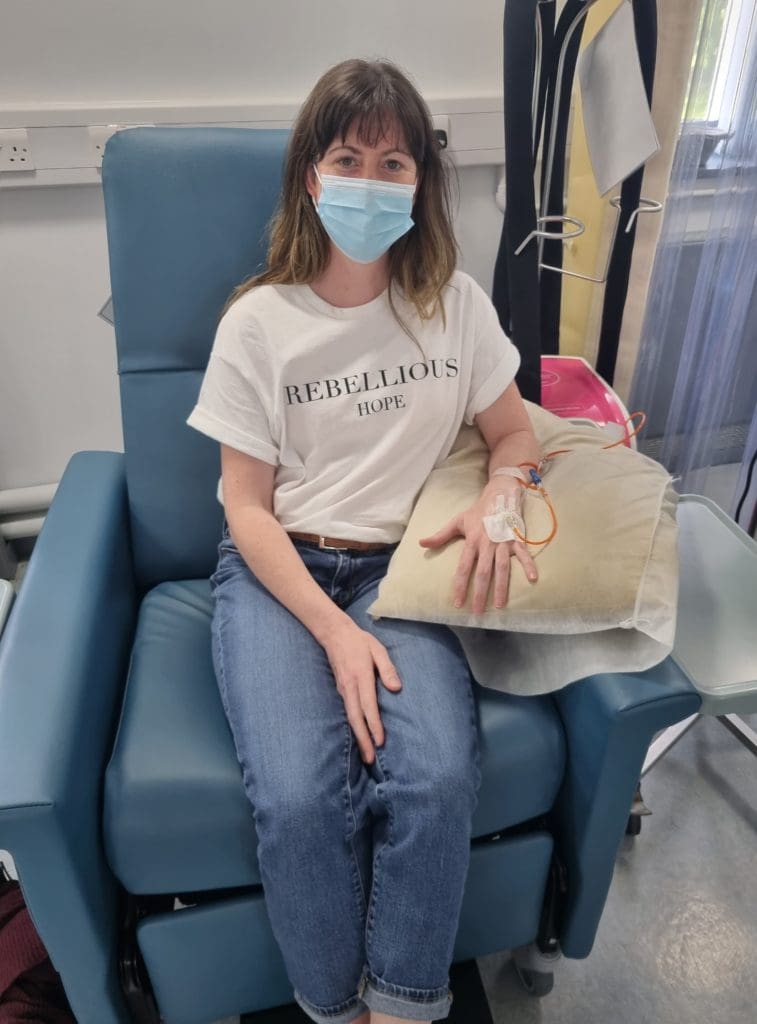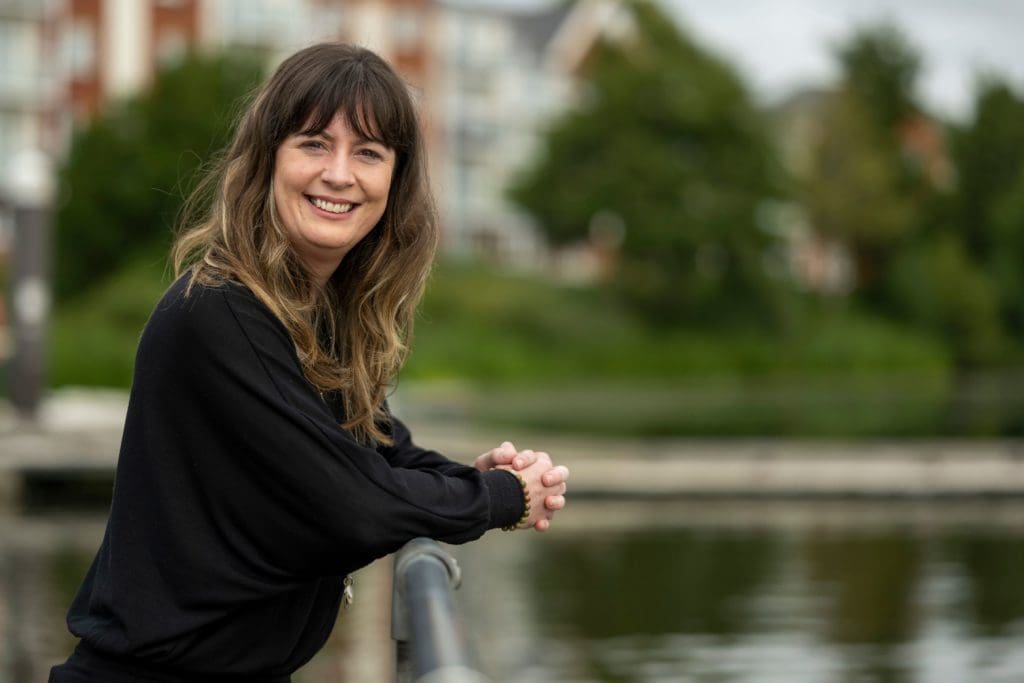The Chief Commissioner for Scouts in Wales who was diagnosed with skin cancer at 41 is urging people to enjoy the sun safely this summer.
Rhian Moore’s call comes as melanoma skin cancer cases have hit a record high of 17,500 per year in the UK* and are projected to soar by around 50% over the next two decades** according to the latest analysis by Cancer Research UK.
It’s these alarming figures that are driving Rhian, 45, to join forces with the charity and NIVEA SUN to share advice and tips on how people can protect their skin from too much exposure to the sun’s UV rays.
Rhian, who lives in Bridgend, has a busy working life having volunteered with Scouts since 2012 and she combines this voluntary role with a full-time job as Head of Internal Communications for Great Western Railway.
But she faced a health challenge in spring 2019 after spotting changes to a mole on her back. Rhian is thankful she made an appointment to get it checked straight away as she was diagnosed quickly with skin cancer and started treatment within a few weeks.
She said: “I showed my GP my mole and he made an urgent referral to a specialist.”

Rhian was diagnosed with melanoma the following week and had surgery to remove the mole.
With at least two people in Wales diagnosed with melanoma – the most serious form of skin cancer – every day,*** the need for guidance on how to stay safe in the sun is clear.
She said: “Being diagnosed with melanoma was a huge shock and a very difficult time. You never expect to hear the words ‘you have cancer’. For a while I felt like a failure – annoyed with myself and frustrated by my body, especially having to miss out on things I loved doing. Spotting lumps, bumps and suspicious moles early makes a huge difference and makes treatment less complicated.
“I hope I can encourage people to think about their sun habits and take precautions. It’s so important, because almost 9 in 10 melanoma cases each year in the UK could be prevented by being safe in the sun and using a combination of shade, clothing and sunscreen to avoid burning.”
Rhian underwent a second surgery to widen the margins around the original site of the mole, to reduce the risk of the cancerous cells spreading. The operation was a success and Rhian had a follow-up CT scan which came back clear.
But in June 2021, Rhian found a lump the size of a gobstopper under her right arm.
She said: “I remember that week like it was yesterday. I found the lump on the Monday. I thought it was unusual, but I assumed it was a cyst.
“I already had an appointment to see my Consultant Dermatologist, Dr Li, the following Monday so I spoke to him about the lump. Dr Li ordered an urgent biopsy and CT scan of the lump, which took place two weeks later”.
Rhian received the news that she had stage 3 melanoma which had spread to her lymph nodes during the middle of a work call.
She said: “I was live on screen speaking to a few hundred people and my WIFI signal dropped. While I was moving to get a better connection, my phone rang and it was Dr Li calling with the results of the biopsy and scan, confirming the cancer had returned.
“I felt faint, sick and knew I had to keep writing down what he was telling me so I could make sense of it later there were words I had not heard before. It was like the floor had swallowed me up and I felt helpless. Thankfully I was with some amazing colleagues that day, including Mark our Managing Director. They were a tremendous support and helped me come to terms with the news.”
Rhian’s treatment included axillary dissection – the removal of the lymph nodes in her armpit – and nine rounds of six-weekly intravenous immunotherapy, which ended on 3 October. Treatment left Rhian feeling constantly tired, but resting and recuperating was a struggle for Rhian who lives on her own and is used to a busy schedule with work, volunteering and leisure activities.
“I just needed to feel like me. It was really hard – I was used to being surrounded by people but I was at home on my own,” said Rhian.
“Being told to rest and not to do too much was hard, and I felt I was missing out. I am not very good at being told I can’t do things, it makes me even more determined to give things a go.”
Following a period of recovery, Rhian started to get back into some of her old hobbies, doing what she could to regain her sense of self and sense of purpose around wanting to help other people.
Recent CT scans have all been clear and Rhian is doing well. She is now back up to full speed with a busy work life, time with family and friends and volunteering for Scouts in Wales – supporting young people to gain valuable skills for life as well as enjoying Pilates and the tranquillity that comes from stand-up paddle boarding, while wearing lots of sun cream.
Cancer Research UK and NIVEA SUN recommend the following when the sun is strong:
- Seek Shade – Especially between 11am and 3pm in the UK. Take a break under trees, umbrellas, and canopies, or go indoors.
- Cover Up – With clothes, a wide-brimmed hat and UV protection sunglasses. Clothing should cover your shoulders. The more skin that’s covered by your clothing, the better the protection.
- Apply Sunscreen – With at least SPF15 and 4 or 5 stars. Make sure to reapply it regularly and generously, especially after swimming, sweating, or towelling.
Anyone can get sunburnt or develop skin cancer, but those at higher risk include people with lighter skin tones and naturally light-coloured hair or eyes, as well as people with lots of moles and freckles, or a family history of skin cancer.
And when it comes to signs and symptoms of the disease, it’s not just changes to a mole that matter, it could be a sore that doesn’t heal or any unusual changes to an area of people’s skin.
Health Information Manager at Cancer Research UK, Beth Vincent, is working to debunk common myths about the sun.
She said: “Melanoma skin cancer is the UK’s fifth most common cancer, so we’re grateful to Rhian for lending his voice to our campaign with NIVEA SUN.
“It’s important to remember the sun isn’t only strong abroad. Even on a cloudy day, it can be strong enough in Wales – and across the UK – to burn between mid-March and mid-October. The sun is also strongest during the middle of the day, not necessarily when it’s hottest.
“Avoid getting caught out by checking the UV index on the weather forecast or online. If it’s 3 (moderate) or above, it’s time to think about sun safety.
“Whether you’re abroad, having a staycation or just out-and-about, remember the three-step method to enjoy warm weather safely – seek shade, cover up and apply sunscreen regularly.”

